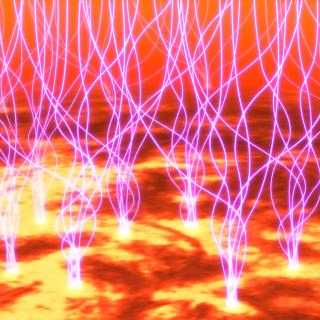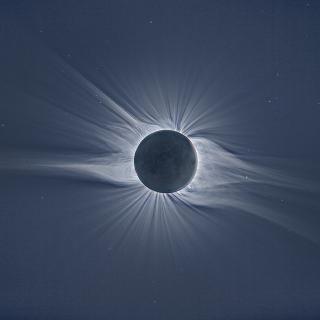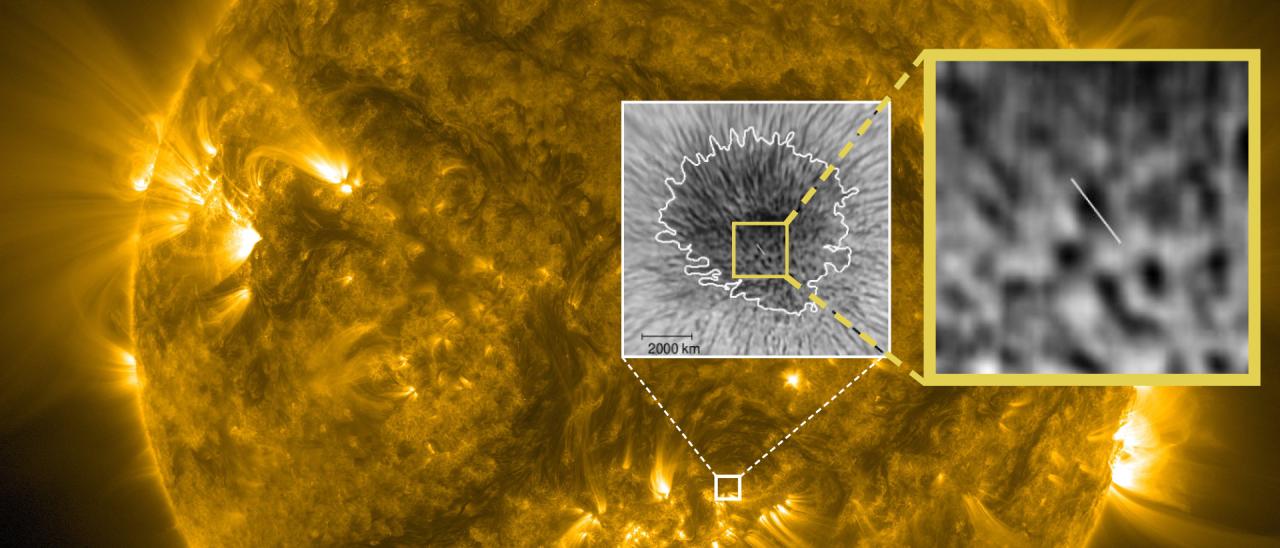An international scientific team, including researchers from the Instituto de Astrofísica de Canarias (IAC) and the University of La Laguna (ULL), have discovered magnetic waves in sunspots with such a high energy flux that they could keep the Sun's atmosphere at millions of degrees. The finding adds a new missing piece to the puzzle of why the Sun's outer layers are hotter than its surface despite being further away from the source of heat. The results are published in the journal Nature Astronomy.
The Sun is powered by nuclear fusion of hydrogen at the core, where the temperature reaches 16,000,000 °C. At the visible surface (or photosphere) of the Sun the temperature drops to about 5,000 °C. It is intuitive that the hydrogen gas located further away from its core should be cooler. The corona is more distant from the core than the photosphere, but its temperature reaches millions of degrees. No current theory could explain this counter-example, this is called the coronal heating problem, a century-long challenge to physicists.
Using the 1.6 m Goode Solar Telescope at the Big Bear Solar Observatory, an international science team detected numerous dark features in a big sunspot, which appears as the coldest structure of the sun. These dark features are plasma fibrils aligned with a strong magnetic field at the sunspot.
"The fibrils oscillate transversely, which means this is a kink magnetohydrodynamic (MHD) wave and they are able to drag the magnetic field lines to move laterally" explains Yuan Ding, a researcher at the Harbin Institute of Technology (China) who led this investigation. "It implies that the fibril kink oscillations could potentially provide a very strong energy flux".
The science team has developed a mathematical model of fast kink waves in sunspots and estimated that the energy flux is 1.000 to 10.000 times stronger than energy losses in active region plasma. This is sufficient to maintain the atmosphere of the Sun at million degrees Kelvin temperature.
"In the study, the plasma parameters were estimated by applying an inversion code developed at the IAC to the observations," says Juan C. Trelles, co-author of the article and researcher at the IAC and the ULL. From these two scientific institutions, researchers Carlos Quintero and Basilio Ruiz also participated in the study.
In addition to this scientific result, the study is accompanied by extremely high spatial resolution data of the darkest area of the sunspot, or umbra, as well as the dynamics of high-energy waves in its plasma fibrils. The study thus provides an unprecedented insight into the strongly magnetised plasma region of the Sun and plays a major role in solving the problem of coronal heating.
The Solar Physics community plans to carry out further research using state-of-the-art solar telescopes that will become available in the coming years, such as the European Solar Telescope (EST), which is planned to be installed at the Roque de los Muchachos Observatory on La Palma.
Article: Yuan Ding et al: “Transverse oscillations and an energy source in a strongly magnetized sunspot”, Nature Astronomy, 2023. DOI: 10.1038/s41550-023-01973-3
Contacts at the IAC:
Juan C. Trelles Arjona, jtrelles [at] iac.es (jtrelles[at]iac[dot]es)
Carlos Quintero Noda, carlos.quintero [at] iac.es (carlos[dot]quintero[at]iac[dot]es)
Basilio Ruiz Cobo, basilio.ruiz [at] iac.es (basilio[dot]ruiz[at]iac[dot]es)






